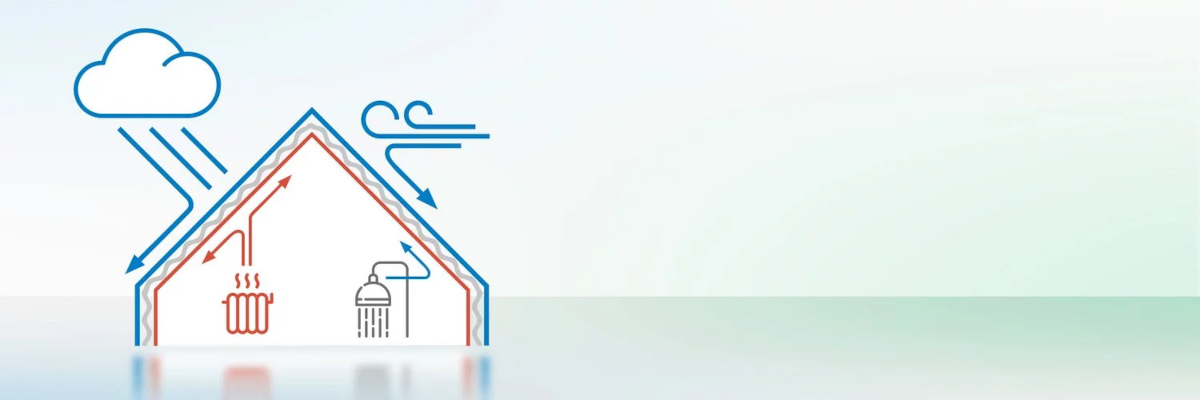
Airtight building envelope
Tightly building prevents unnecessary heat loss and building damage through condensation!
All heat-transferring exterior surfaces of buildings must be airtight in the areas of joints, connections and penetrations. Airtightness reduces uncontrolled air exchange due to pressure differences between the inside and outside of a building.
A lack of airtightness leads to unnecessary heat loss and structural damage due to condensation. Particular care must be taken when executing airtight layers and connection points.
The risks of leaky construction:
Excessive energy consumption
Warm heating air flows outside uncontrolled through leaks and is replaced by cold outside air. This has to be repeatedly heated up to room temperature.
Not only heating, but also ventilation systems work less effectively than calculated because additional air flows through leaks disrupt proper operation.
Moisture damage
Warm, humid room air gets inside the building structure through leaks in the sealing layer. When it cools down, the moisture condenses there as condensation. Hidden mildew growth, dry rot and soaking of components are just a few of the possible consequences.
If the latter happens, the surfaces on the room side often cool down to such an extent, despite insulation, that moisture damage occurs here too, with mildew that is now visible. It has a similar effect when cold outside air flows through leaks and the area around them cools down.
Failing noise protection.
Wherever air flows, sound waves also appear unhindered. This is why even the best noise protection windows lose their effectiveness if they are not installed absolutely tightly or if the building envelope has other flaws.
If there are leaks to adjacent semi-detached houses, terraced houses, apartments or other units, there is a risk of noise pollution from next door.
Poor indoor air quality
Pollutants, fine dust, allergens and smoke gases enter the building uncontrolled through gaps in the otherwise tight shell.
Mildew spores within the building structure and dust from the building materials also find their way inside and can pollute the air in the room.
Flaws in the building envelope lead to uncomfortable rooms
In winter and when there is strong wind pressure, cold air "pulls" noticeably inside through leaks. Surfaces that have cooled down on the room side also trigger drafts or cold sensations because air movements are set in motion.
Such cold wall surfaces occur in the vicinity of leaks directly through which outside air flows, at thermal bridges or because the thermal insulation is saturated with moisture and no longer works.